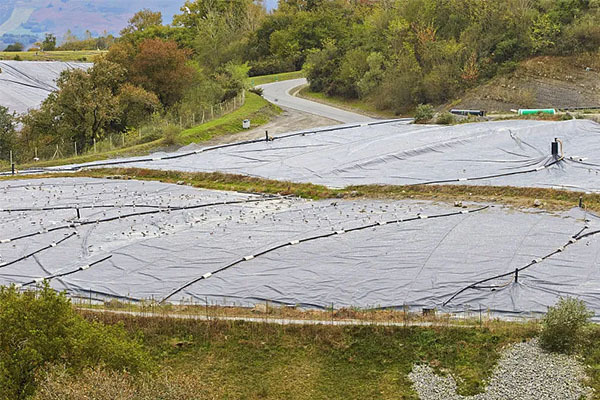Navigating the World of Geomembrane Rolls: Key Considerations
Release time:
2025-06-30
Discover essential tips and insights when working with geomembrane rolls for your projects.
An Introduction to Geomembrane Rolls
Geomembrane rolls are often the unsung heroes of construction and environmental projects. Whether you're dealing with waste containment, water storage, or landfills, these durable sheets can save the day! But before you dive headfirst into your next project, there are a few considerations you need to keep in mind. Let's unpack this topic together!
What's a Geomembrane Roll Anyway?
Alright, let’s break it down. A geomembrane roll is a flexible membrane liner made from synthetic materials, typically used in various containment applications. They come in rolls for easy handling and installation, and they’re designed to prevent fluid migration. Talk about handy!
Why You Should Care
Now, you might be wondering, "Why should I care about geomembrane rolls?" Well, if you're involved in construction, waste management, or any project that interacts with liquids, these rolls can be a game changer. They help mitigate risks and ensure compliance with environmental regulations. Pretty impressive, right?
Key Considerations When Using Geomembrane Rolls
So, before you roll out those geomembrane rolls, here are some crucial considerations to keep in mind:
1. Material Matters!
First things first, not all geomembrane rolls are created equal. They come in various materials, like HDPE, LLDPE, and PVC. Each has its unique strengths and weaknesses. For instance, HDPE is known for its high tensile strength and durability, while PVC offers better flexibility. Choosing the right material for your specific application is paramount.
2. Weather Woes
Oh boy, weather can be a real pain! If you’re working outdoors, pay attention to the forecast. Rain, snow, or extreme heat can affect the installation process. Make sure you plan accordingly to avoid any hiccups that could derail your project.
3. Proper Installation Techniques
Let’s face it: a geomembrane roll is only as good as its installation. Ensure that your crew is well-versed in the best practices for laying down these rolls. Overlap seams, use proper adhesives, and consider employing a professional if you’re unsure. Trust me; it’s worth the investment!
Maintenance and Inspection: Keep It Fresh!
Once your geomembrane rolls are laid down, the job isn’t over just yet! Regular maintenance and inspections are critical to ensure long-term performance. Look for signs of wear and tear, and address any issues promptly. After all, a stitch in time saves nine!
4. Know Your Regulations
Before you get rolling, make sure you’re familiar with local regulations regarding geomembrane usage. Compliance is key! Each region may have different rules governing installation, materials, and maintenance. A little research can go a long way.
5. Environmental Impact
Let’s not forget about Mother Nature! Using geomembrane rolls can significantly reduce environmental impact when properly installed and maintained. They help prevent contamination of soil and groundwater, making them a wise choice for eco-conscious projects.
In Conclusion
So there you have it, folks! Armed with these considerations, you're ready to tackle your next project involving geomembrane rolls. Remember, the right material, proper installation, and regular maintenance can make all the difference in achieving success. Now go out there and make waves in your field—safely and sustainably!






